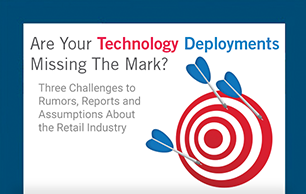 The advent of vision AI is revolutionizing the way industries such as retail and quick-service restaurants (QSRs) operate, unlocking new potential through advanced analytics and proactive security measures. As businesses innovate and adapt, they are harnessing vision AI to perform functions that surpass human capabilities, ultimately enhancing customer experience and safety.
The advent of vision AI is revolutionizing the way industries such as retail and quick-service restaurants (QSRs) operate, unlocking new potential through advanced analytics and proactive security measures. As businesses innovate and adapt, they are harnessing vision AI to perform functions that surpass human capabilities, ultimately enhancing customer experience and safety.
Enhancing customer analytics for service excellence
Gone are the days of evaluating customer experience through a narrow lens. Vision AI now enables businesses to take a holistic view of the customer journey, capturing every critical interaction from the moment a customer arrives in the parking lot to the final point of purchase. By analyzing factors such as parking difficulties, wait times at counters, in-store movements, checkout delays and cart abandonment, companies can gain invaluable insights into service efficiency. This comprehensive analysis not only highlights pain points but also empowers businesses to make informed decisions that enhance service quality.
Defining new key performance indicators
One leading QSR chain is redefining its operational metrics by integrating vision AI to track customer behavior in real time. It's no longer just about knowing how long a car waits in line; now, businesses can monitor abandonment rates and customer dwell times. For instance, if a vehicle exits the drive-thru queue after a prolonged wait or circles the lot without making a purchase, these behaviors become quantifiable metrics. This capability not only identifies operational challenges but also enables companies to track progress over time, fostering a culture of continuous improvement.
Monitoring beyond human capabilities
In high-stakes environments like neonatal intensive care units (NICUs), vision AI has the potential to be a game changer. Used in combination with monitors and sensors already deployed in these environments, vision AI can be used to monitor premature newborns for health detection queues such as changes in skin color or breathing patterns. With these combined technologies, medical personnel can receive instant alerts regarding any anomalies, enhancing the quality of care and potentially saving lives. The reliability and consistency of AI monitoring represent a profound advancement in patient safety.
Streamlining forensic investigations
When it comes to security, vision AI is transforming how we approach forensic investigations. In stadiums and large venues, traditional methods of problem-solving were often inefficient, akin to searching for a needle in a haystack. However, with targeted vision AI capabilities, identifying suspects based on specific criteria—like a description of clothing—can be accomplished in seconds. This technology significantly enhances safety measures while fostering a more secure environment.
Ensuring consistency in food safety monitoring
In the restaurant industry, maintaining food safety protocols across multiple locations is crucial yet challenging. Vision AI offers a solution by providing continuous monitoring that supersedes traditional manual checklists and audits. By monitoring a variety of variables from employee hand-washing to food sitting durations and cross-contamination, this technology helps businesses turn food safety breaches into rare outliers rather than recurring incidents.
As vision AI continues to penetrate various industries, its potential becomes increasingly evident. From enhancing customer service to improving operational efficiency and safety, these advanced technologies are not just trends—they are fundamental changes that reshape how businesses function and thrive. Embracing these capabilities means stepping into a future where informed decision-making and precision monitoring are the norms. The seismic shift brought about by vision AI is not merely a technological advancement; it is an invitation to elevate our operational standards and redefine success in the ever-evolving landscape of business.




